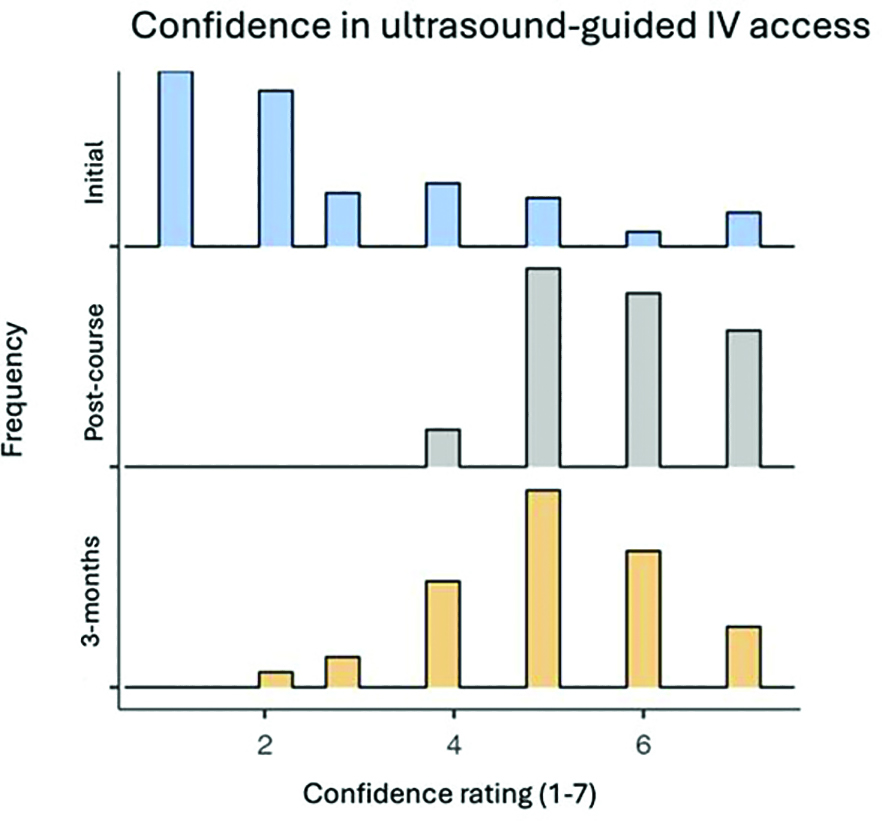
Ultrasound-guided cannulation shown to be safer and more efficient than landmark-guided cannulation [1]. But it is a skill many resident doctors lack confidence in. We developed an ultrasound-guided cannulation course which aimed to give healthcare workers an opportunity to learn this skill in a safe simulated environment. We evaluated its impact on confidence ratings immediately and 3 months after the course.
Following a needs assessment, a 3-hour course was developed. The course had 3 small group stations: tips and tricks to learn one handed cannulation; basics of ultrasound to understand how to identify peripheral veins on an ultrasound image; followed by an ultrasound guided cannulation station. Candidates had the opportunity to practice on either ADAMgel or commercially available phantoms/models. The course was open to all doctors and allied healthcare professionals in the trust. In total 93 candidates were trained between August 2023 and August 2024.
Confidence in ultrasound guided cannulation was assessed with 7 point Likert scales as part of the needs assessment, immediately after the training sessions and 3 months after the courses.
Data was analysed using Dwass-Steel-Critchlow-Flinger pairwise comparison tests with Jamovi software.
There were 112 responses to the initial questionnaire, 88 to the post-course and 36 for the 3-month questionnaire. Mean confidence in ultrasound guided IV access was 2.70 (SD 1.795) initially. This increased to 5.75 (SD 0.913) following the course and decreased to 5.08 (SD 1.180) at the 3-month time point. Dwass-Steel-Critchlow-Flinger pairwise comparison showed statistically significant increase in confidence rating between the initial questionnaire and both the post-course and 3-month time point. There was a decrease in confidence rating between the initial post-course and 3-month point but this was not statistically significant.
In a large cohort of healthcare professionals, we have shown a significant improvement in confidence in ultrasound-guided cannulation following attending ourcourse. This supports wider roll out of such courses to empower practitioners to confidently gain peripheral IV access using ultrasound guidance. From anecdotal evidence we believe this potentially has reduced referrals to anaesthetics for difficult cannulations in our trust. We aim to quantify this more objectively over the coming months.
The observed decrease in confidence 3 months after the course suggests a booster course may help to refresh skills. Given confidence was still greater than at baseline, this may only need to be a single station to practise the procedure.
As the submitting author, I can confirm that all relevant ethical standards of research and dissemination have been met. Additionally, I can confirm that the necessary ethical approval has been obtained, where applicable
1. García-Carpintero E, Naredo E, Vélez-Vélez E, Fuensalida G, Ortiz-Miluy G, Gómez-Moreno C. Phantoms for ultrasound-guided vascular access cannulation training: a narrative review. Med Ultrason. 2023;25(2):201–207. doi: 10.11152/mu-3711.
We would like to thank all the faculty members who helped deliver the course.
